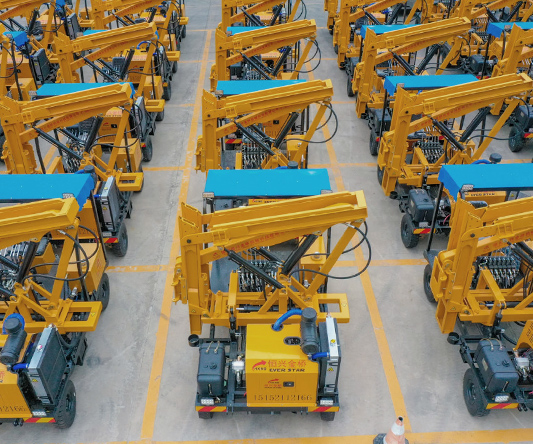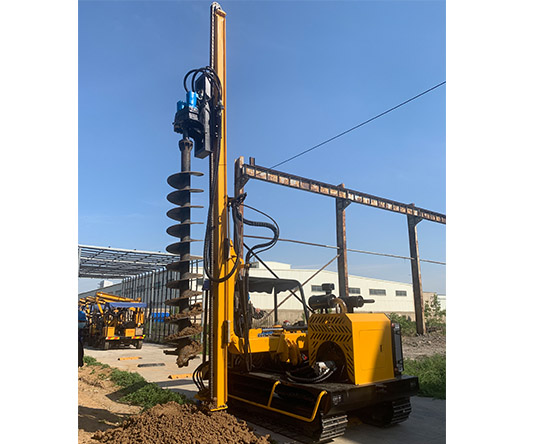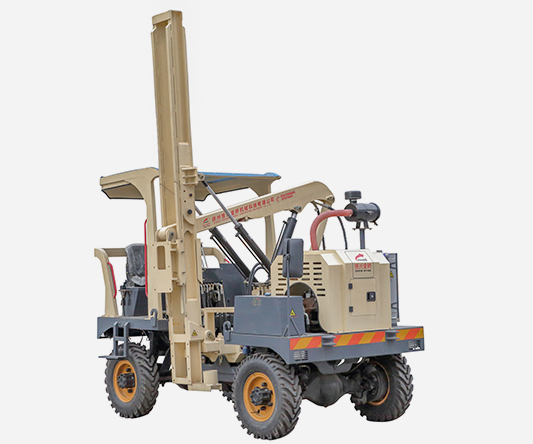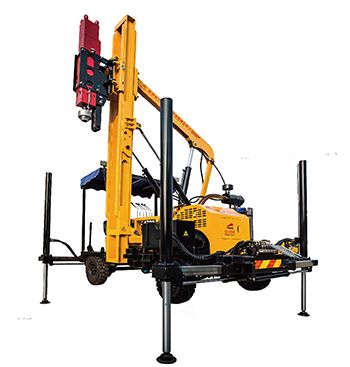The prime goal of piling winches is to left the hammer and piles in addition to support tools that responsible for leader raking and rotation. It functions with pile frames and different powering sources such as hydraulic power, stream; diesel; or petrol engines, and occasionally electric motors could be applied for powering winches. There are different piling winches with different capacity for instance winches with double or triple drums possess satisfactory controlling and pile driving speed whereas one drum winch does not have that advantage. So, the former type would be favored provided that handing and driving piles with great speed is required.
news
-
Vibratory pile hammerVibratory pile hammer
-
Hydraulic impact pile hammerHydraulic impact pile hammers are suitable for driving steel tube pipes, sheet piles, precast concrete and timber piles. The stroke and blow rates are adjustable to optimize the pile driving performance in all conditions. The ram weight can also be changed according to pile type requirements. All this means that one hammer serves efficiently a wide range of different pile driving operations. The hammers can be mounted on all kinds of pilling leaders or can be freely suspended. It is suitable to be used as a leader mounted on piling rigs and piling cranes as well as crane suspended. Different features of this machine utilized for Indian terrain includes;
-
 Rotary drilling rigA rotary drilling rig is used to cut or crush through sub surfaces. Thus, it is possible thanks to downward pressure, and the combined effects of a sharp, rotating drill bit. Additionally, the impact force the above-ground or down-hole impact hammer supplies to the drill bit helps the rig drill deeper and wider holes. The features of a rotary drilling rig worth mentioning include: A short leader system for use in shallow construction sites The presence of modularly constructed leaders and counterweights The presence of strong, lightly designed steel Kelly bar tubes Tailored, large, spaced pumps and valves that are easy to maintain Special drilling attachment for use with anti-seismic piles Modern air-conditioning that improves the operator’s comfort through better airflow Control system with multiple program and control options Providing the operator with optimized vision field and noise protection
Rotary drilling rigA rotary drilling rig is used to cut or crush through sub surfaces. Thus, it is possible thanks to downward pressure, and the combined effects of a sharp, rotating drill bit. Additionally, the impact force the above-ground or down-hole impact hammer supplies to the drill bit helps the rig drill deeper and wider holes. The features of a rotary drilling rig worth mentioning include: A short leader system for use in shallow construction sites The presence of modularly constructed leaders and counterweights The presence of strong, lightly designed steel Kelly bar tubes Tailored, large, spaced pumps and valves that are easy to maintain Special drilling attachment for use with anti-seismic piles Modern air-conditioning that improves the operator’s comfort through better airflow Control system with multiple program and control options Providing the operator with optimized vision field and noise protection -
 Piling rigsPiling rigs are mainly used to drill/create piles in soil, clay, etc. It is widely used for cast-in-place piles, diaphragm walls, and foundation reinforcement. It consists of a tabular element or hard box, placed and fixed on a crane base. Piling rigs in India come with different features that can be utilized to dig within the earth’s subsurface, making of the water wells, oil wells or natural gas extraction wells, or to install sub-surface fabrications. It is designed for multipurpose use and can be equipped with special kits for different foundation and geotechnical construction methods including, drilled shafts, caissons, continuous flight auger, diaphragm walls, etc. The features include; Integrated with mechanical, electrical and hydraulic systems Comes with 360⁰ camera rearview for operator efficiency Emergency stopping of machine possible Attached with Boom micro-switch for control of the stability limit Double-rotary interlocking kelly bars for transfer of torque and crowd force from the rotary drive to the drilling tool Interlocking bars with the higher pulling force for the tougher terrain Interlocking kelly bars for pulling up during the extraction phase with the main winch and the rotary Comes with a parallelogram for precise positioning
Piling rigsPiling rigs are mainly used to drill/create piles in soil, clay, etc. It is widely used for cast-in-place piles, diaphragm walls, and foundation reinforcement. It consists of a tabular element or hard box, placed and fixed on a crane base. Piling rigs in India come with different features that can be utilized to dig within the earth’s subsurface, making of the water wells, oil wells or natural gas extraction wells, or to install sub-surface fabrications. It is designed for multipurpose use and can be equipped with special kits for different foundation and geotechnical construction methods including, drilled shafts, caissons, continuous flight auger, diaphragm walls, etc. The features include; Integrated with mechanical, electrical and hydraulic systems Comes with 360⁰ camera rearview for operator efficiency Emergency stopping of machine possible Attached with Boom micro-switch for control of the stability limit Double-rotary interlocking kelly bars for transfer of torque and crowd force from the rotary drive to the drilling tool Interlocking bars with the higher pulling force for the tougher terrain Interlocking kelly bars for pulling up during the extraction phase with the main winch and the rotary Comes with a parallelogram for precise positioning -
 What are the different types of pile?Depending on their function, piles are classified as bearing piles, friction piles, friction-cum-bearing piles, batter piles, guide piles, and sheet piles. Based on the composition of materials, piles are classified as timber piles, concrete piles, sand piles, or steel piles.
What are the different types of pile?Depending on their function, piles are classified as bearing piles, friction piles, friction-cum-bearing piles, batter piles, guide piles, and sheet piles. Based on the composition of materials, piles are classified as timber piles, concrete piles, sand piles, or steel piles.







